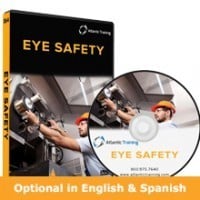
September 23, 2013
Did loss of vision in one eye make job applicant a safety risk?


September 23, 2013

A man became essentially blind in one eye. Could he safely become an FBI Special Agent? The case was heard before the U.S. Equal Employment Opportunity Commission (EEOC).
First, some background on this case.
Jeremy Nathan had been an infantry officer in the U.S. Army. After noticing a change in his eyesight, a doctor diagnosed a detached retina.
Nathan had surgery. It didn’t reverse the damage, but it did stop its progression.
He received an honorable discharge from the Army, got a law degree and then applied to become a Special Agent (SA) with the FBI.
The FBI offered Nathan a conditional offer of employment. One condition: successfully completing a medical exam.
The exam revealed that his vision in his right eye was 20/800. The FBI rescinded its offer based on “substandard vision in the right eye, unacceptable for safe and efficient job performance.”
The FBI requires applicants for SA positions to have uncorrected vision of 20/200 in each eye, with correction to 20/20 in one eye and 20/40 in the other.
Nathan asked for reconsideration which the FBI denied. Then he filed an EEO complaint alleging he was discriminated against on the basis of disability (monocular vision).
An EEOC Administrative Law Judge (AJ) found the FBI did discriminate against Nathan based on his disability. The AJ found the FBI failed to establish Nathan would be a direct threat as an SA because it didn’t perform an individualized assessment on whether he could safely perform the functions of the position.
The FBI appealed the AJ’s decision to the EEOC.
The manager for the FBI Training Academy’s Law Enforcement Training for Safety and Survival Program testified a person such as Nathan with reduced peripheral vision and depth perception presented a significantly increased safety risk in a situation in which an SA would have to “clean a room.”
The FBI had conducted a study of the effect of reduced peripheral vision in a room-clearing scenario and determined such a person would be without 35-38% of his/her vision while entering the room.
And that’s what this case hinged on: the FBI study and whether it was sufficient to be considered an individualized assessment of whether Nathan could perform the SA duties.
If this sounds like an Americans with Disabilities Act case to you, it certainly has those characteristics. The law in question is the U.S. Rehabilitation Act which prohibits discrimination on the basis of disability in the programs conducted by federal agencies. The standards are the same as under the ADA.
To establish discrimination under the Rehabilitation Act, someone must show:
On whether he was a qualified person, the EEOC noted Nathan met all of the FBI’s job requirement except its vision standard.
Under the Rehabilitation Act (and the ADA), it’s permissible to disqualify an applicant who is deemed to be a direct threat. A direct threat is defined as a significant risk of substantial harm to the health or safety of himself or others which can’t be eliminated or reduced to an acceptable level by reasonable accommodation.
Whether a person is a direct threat must be based on an individualized assessment.
The EEOC found the FBI didn’t perform an adequate assessment of Nathan’s ability to safely hold the SA job. It said the FBI’s use of evidence from a study alone was insufficient to establish that Nathan’s condition would be likely to cause substantial harm.
The EEOC said an individualized assessment should:
The FBI’s study looked only at the range of vision lost by a typical person with monocular vision, according to the EEOC, and Nathan should have been provided an opportunity to demonstrate how he could safely perform the essential functions of the job because of compensatory skills he developed.
At the hearing, Nathan said he could compensate for the loss of part of his visual field by turning his head so the portion of an area that was blocked out in his sight was then visible. But he also admitted that another part of the field would then become invisible to him.
The EEOC upheld the AJ’s finding of discrimination and remanded Nathan’s case back to the FBI for “corrective action,” which would include the reinstatement of the conditional offer of employment.
Two members of the EEOC disagreed with the majority ruling in this case and wrote a dissent.
The dissent states there is nothing in the EEOC’s regulations that dictates one approach to performing an individualized assessment. The dissenters said the FBI’s detailed simulation fulfilled the requirement for an individualized assessment.
“This Decision is particularly disturbing because of the implications it will have for other law enforcement agencies,” the dissent states. “There is no reason this new heightened requirement would not apply to all law enforcement agencies — not only federal law enforcement, but also state and local law enforcement agencies.”
What do you think about the EEOC’s decision in this case? Where should the line be drawn between safety and prevention against employment discrimination? Let us know what you think in the comments below.
(Nathan v. Holder, U.S. EEOC, Appeal No. 0720070014, 7/19/13)
This article retrieved from Safetynewsalert.com

 To prevent discrimination, you have to understand the sinister psychology behind it all. View Product
To prevent discrimination, you have to understand the sinister psychology behind it all. View Product
 Fundamentals of the original A.D.A. and explain the changes that are now in effect. View Product
Fundamentals of the original A.D.A. and explain the changes that are now in effect. View Product